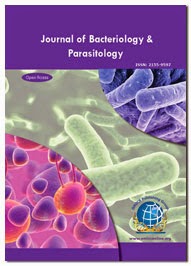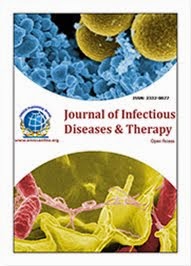Theme: Exploring New Innovations and Frontiers in Bacteriology and Infectious Diseases
Bacteriology 2018
- About Conference
- Sessions/Tracks
- Market Analysis
- VISA Information
- Journals List
- Current Research
- VISA Information For Delegates
- Scientific Program(Past 5 Years)
Conference Series LLC Ltd invites all the participants from all over the world to attend 6th International Congress on Bacteriology and Infectious Diseases during May 21-22, 2018 in New York , USA which includes prompt keynote presentations, Oral talks, Poster presentations and Exhibitions.
For more details download our brochure here : https://bacteriology.conferenceseries.com/conference-brochure.php
Bacteriology 2018 is providing a global platform for research that affords new insights into Microbiology, Molecular bacteriology, Clinical diagnostic bacteriology, Bacterial infections, Industrial bacteriology, Immunology and Infectious Diseases. Infectious diseases are those which are caused by bacteria like E.coli, Salmonella, H.pylori, N.gonorrhoeae, N.meningitidis, S.aureus, and S.bacteria. It includes diseases like pneumonia, meningitis, gastroenteritis, urinary tract infections. The drugs used to treat such bacterial infections are called Antibiotics. Especially in US about $ 44.68 billion is expected to reach by 2017.In the period of 2005-2011, there is a growth rate of 6.6% annually. The manufacturing of antibiotics has increased gradually these days, so global demand for aminoglycoside antibiotics is about 79%, pencillin 8%, tetracyclines 4%, erythromycin 7%, streptomycin 1% and chloramphenicol shares about 1% in the antibiotic market globally. The consumables, equipment and technology markets in the microbiology industry totaled nearly $7.7 billion in 2012. This total is expected to grow from $8.5 billion in 2013 to $11.4 billion in 2018, with a compound annual growth rate (CAGR) of 6.1% for the five-year period, 2013 to 2018.
Files from Microsoft outlook, Gmail, Google Drive, WE Transfer are also accepted for video and poster presentation.
Get connected on Facebook, twitter, LinkedIn for latest update.
We would also like to bring to your kind notice that we have 300+ journals where you can publish your full length manuscripts at discounted price. If you are interested please contact me[bacteriology@infectiousconferences.com] for further details.
Track 1: Bacteriophage
A bacteriophage is a type of virus that infects bacteria. In fact, the word "bacteriophage" literally means "bacteria eater," because bacteriophages destroy their host cells. Bacteriophages are composed of proteins that encapsulate a DNA or RNA genome, and may have relatively simple or elaborate structures. Bacteriophages are among the most common and diverse entities in the biosphere. Phages are widely distributed in locations populated by bacterial hosts, such as soil or the intestines of animals. They have been used for over 90 years as an alternative to antibiotics in the former Soviet Union and Central Europe, as well as in France. They are seen as a possible therapy against multi-drug-resistant strains of many bacteria. Twort and d’Hérelle began to use phages in treating human bacterial diseases such as bubonic plague and cholera. Before antibiotics were discovered, there was considerable research on bacteriophages as a treatment for human bacterial diseases. Bacteriophages attack only their host bacteria, not human cells, so they are potentially good candidates to treat bacterial diseases in humans.
Related Conferences : 4th International Conference on Sexually Transmitted Diseases, Jun 19-20, 2017 UK, 4th International Conference on Chronic Obstructive Pulmonary Disease (COPD), May 29-31, 2017 Japan, 5th International Congress on Bacteriology and Infectious Diseases, May 25-26, 2017 USA, Keystone Symposia: New developments in our basic understanding of tuberculosis, Jan 14-18, 2017 Canada, 35th UC Davis Annual infectious diseases conference, Feb 03-04, 2017 USA, 24th Conference on retroviruses and opportunistic infections, Feb 13-16, 2017 USA, Keystone Symposia Malaria: From innovation to eradication, Feb 19-23, 2017 Uganda, Australasian society for infectious diseases annual scientific meeting, Mar 29-Apr 01, 2017 Australia.
Track 2: Bacterial Oral / Mouth Infections
The oral cavity contains some of the most varied and vast flora in the entire human body and is the main entrance for two systems vital to human function and physiology, the gastrointestinal and respiratory systems. Oral cavity may create foci of infection that can affect many other vital systems, such as the cardiovascular and renal systems. Foci of infection in the oral cavity arising from chronic periodontitis or chronic periapical abscesses (ie, inflammation and abscess of the tissue attached to the apex of the root) may lead to subacute bacterial endocarditis (BE) and glomerulonephritis (GN). Oral microorganisms can include fungal, protozoal, and viral species. Periodontitis is a common chronic bacterial infection of the supporting structures of the teeth. The relative risk of cardiovascular disease is doubled in persons with periodontal disease. A bacterial infection can lead to sores and swelling in the mouth. Infections may be caused by an overgrowth of organisms normally present in the mouth or by newly introduced organisms, such as the bacteria that cause syphilis or gonorrhea. Bacterial infections from teeth or gums can spread to form a pus-filled pocket of infection (abscess) or cause widespread inflammation.
Related Conferences : 4th International Conference on Sexually Transmitted Diseases, Jun 19-20, 2017 UK, 4th International Conference on Chronic Obstructive Pulmonary Disease (COPD), May 29-31, 2017 Japan, 5th International Congress on Bacteriology and Infectious Diseases, May 25-26, 2017 USA, Keystone Symposia: New developments in our basic understanding of tuberculosis, Jan 14-18, 2017 Canada, 35th UC Davis Annual infectious diseases conference, Feb 03-04, 2017 USA, 24th Conference on retroviruses and opportunistic infections, Feb 13-16, 2017 USA, Keystone Symposia Malaria: From innovation to eradication, Feb 19-23, 2017 Uganda, Australasian society for infectious diseases annual scientific meeting, Mar 29-Apr 01, 2017 Australia.
Track 3: Bacterial food infections
Food borne illness is an ever-present threat that can be prevented with proper care and handling of food products. Parasites, fungi, viruses and bacteria can cause food borne illness. Bacteria related food poisoning is the most common. More than 90 percent of the cases of food poisoning each year are caused by Staphylococcus aureus, Salmonella, Clostridium perfringens, Campylobacter, Listeria monocytogenes, Vibrio parahaemolyticus, Bacillus cereus, and Entero-pathogenic Escherichia coli. These bacteria are commonly found on many raw foods. Normally a large number of food-poisoning bacteria must be present to cause illness. Infants, older persons, women who are pregnant and anyone with a compromised immune system are especially susceptible to food-borne illness. Foodborne illnesses are infections or irritations of the gastrointestinal (GI) tract caused by food or beverages that contain harmful bacteria, parasites, viruses, or chemicals. Salmonella is by far the biggest culprit of serious food poisoning cases in the United States. Toxoplasma is the parasite seen most often in cases of food poisoning.
Related Conferences : 4th International Conference on Sexually Transmitted Diseases, Jun 19-20, 2017 UK, 4th International Conference on Chronic Obstructive Pulmonary Disease (COPD), May 29-31, 2017 Japan, 5th International Congress on Bacteriology and Infectious Diseases, May 25-26, 2017 USA, Keystone Symposia: New developments in our basic understanding of tuberculosis, Jan 14-18, 2017 Canada, 35th UC Davis Annual infectious diseases conference, Feb 03-04, 2017 USA, 24th Conference on retroviruses and opportunistic infections, Feb 13-16, 2017 USA, Keystone Symposia Malaria: From innovation to eradication, Feb 19-23, 2017 Uganda, Australasian society for infectious diseases annual scientific meeting, Mar 29-Apr 01, 2017 Australia.
Track 4: Emerging Infectious Diseases
Occupational epidemiology is of great importance in clinical epidemiology and of occupational hygiene since it provides powerful and good information to understand the causes and determinants of work related ill-health, to help establish what steps should be taken to reduce occupational risks, and to evaluate interventions for the benefits of workers, and of the community in a bigger manner. Many organisms live in and on our bodies which are normally harmless or even helpful, but under certain conditions, some organisms may cause disease. Some infectious diseases can be passed from person to person.
It introduces the basic methods for infectious disease epidemiology and case studies of important disease syndromes, bacterial Infection and entities. Methods include definitions and nomenclature, outbreak investigations, disease surveillance, case-control studies, cohort studies, laboratory diagnosis, molecular epidemiology, dynamics of transmission, and assessment of vaccine field effectiveness. Case-studies focus on acute respiratory infections, diarrheal diseases, hepatitis, HIV, tuberculosis, sexually transmitted diseases, malaria, and other vector-borne diseases. The IDD market is poised to reach $18,156.2 million by 2019 from $12,422.8 million in 2014, at a CAGR of 7.9% from 2014 to 2019.
Neisseria is a large genus of bacteria that colonize the mucosal surfaces of many animals. Of the 11 species that colonize humans, only two are pathogens, N. meningitidis and N. gonorrhoeae. Most gonoccocal infections are asymptomatic and self-resolving, and epidemic strains of the meningococcus may be carried in >95% of a population where systemic disease occurs at <1% prevalence.
Meningitis is an acute inflammation of the protective membranes covering the brain and spinal cord, known collectively as the meninges. The inflammation may be caused by infection with viruses, bacteria, or other microorganisms, and less commonly by certain drugs. Meningitis can be life threatening because of the inflammation's proximity to the brain and spinal cord. The common symptoms are headache and neck stiffness associated with fever, confusion or altered consciousness, vomiting, and an inability to tolerate light (photophobia) or loud noises (phonophobia).There are about 464,000 deaths in 1990 and 303,000 deaths in 2013.
Related Conferences : 4th International Conference on Sexually Transmitted Diseases, Jun 19-20, 2017 UK, 4th International Conference on Chronic Obstructive Pulmonary Disease (COPD), May 29-31, 2017 Japan, 5th International Congress on Bacteriology and Infectious Diseases, May 25-26, 2017 USA, Keystone Symposia: New developments in our basic understanding of tuberculosis, Jan 14-18, 2017 Canada, 35th UC Davis Annual infectious diseases conference, Feb 03-04, 2017 USA, 24th Conference on retroviruses and opportunistic infections, Feb 13-16, 2017 USA, Keystone Symposia Malaria: From innovation to eradication, Feb 19-23, 2017 Uganda, Australasian society for infectious diseases annual scientific meeting, Mar 29-Apr 01, 2017 Australia.
Track 5: Bacterial Pathogenesis
Many bacterial Infection forms biofilms with which its pathogenic nature increases. The vast majority of these compounds exert their antibiofilm properties through disruption of "quorum sensing," a common means of intercellular communication in bacterial communities that allows coordinated expression of virulence factors and facilitates formation of the complex architecture of mature bacterial biofilms causing zoonotic bacterial diseases. Certain pathogens like Pseudomonas syringe injects virulence in plant host causing diseases. For the Diagnosis of Pathogenic microorganisms Direct Examination and Techniques includes Immunofluorescence, immuno-peroxidase staining, and other immunoassays may detect specific microbial antigens. Genetic probes identify genus- or species-specific DNA or RNA sequences.
Forensic evidence involves application of forensic science, technology or "forensics", in order to identify the scene of an accident, specific objects from the trace evidence and often at a crime scene. It is usually submitted to court, which are obtained by scientific methods like by blood test, DNA test. Diagnostic Pathology deals with examination of body tissues and their examination. Microscopical study of abnormal tissue development, disease determination, histopathology of lesions and sometimes post-mortem. It does research on critical diagnosis in surgical pathology.
Antibiotic resistant microorganisms have become a brewing problem to our nation. A report states that about 2 million people get sick and 23,000 dies per year because of these microorganisms. The annual cost for the medical expenses were up to $35 billion and another $35 billion was lost in productivity.
Related Conferences 4th International Conference on Sexually Transmitted Diseases, Jun 19-20, 2017 UK, 4th International Conference on Chronic Obstructive Pulmonary Disease (COPD), May 29-31, 2017 Japan, 5th International Congress on Bacteriology and Infectious Diseases, May 25-26, 2017 USA, Keystone Symposia: New developments in our basic understanding of tuberculosis, Jan 14-18, 2017 Canada, 35th UC Davis Annual infectious diseases conference, Feb 03-04, 2017 USA, 24th Conference on retroviruses and opportunistic infections, Feb 13-16, 2017 USA, Keystone Symposia Malaria: From innovation to eradication, Feb 19-23, 2017 Uganda, Australasian society for infectious diseases annual scientific meeting, Mar 29-Apr 01, 2017 Australia.
Track 6: Natural Microbial Defences & Immunity
Humans are associated with microorganisms, as they even colonize in the body like S.aureus in the upper respiratory tract but it may not be harmful to the host and micro inflammation is a body’s defensive response towards an invading microorganism as an effort for self-protection to eradicate harmful stimuli. There are innate immune systems (primary defense mechanism) and adaptive immune system (secondary defence mechanism). Immunogenetics is a subspeciality of medicine that studies the relationship between genetics and immunology. Immunogenetics helps in understanding the pathogenesis of several autoimmune and infectious diseases and bacterial infections under clinical bacteriology also. The effect of pathogen on host not only depends upon the virulence factor but also depend upon the host’s genetic background. Some species shows innate susceptibility to pathogen not with host like syphilis, gonorrhoea, measles and poliomyelitis act on humans alone. The anatomical defense includes penetration of bacteria through the cut, puncture or scrap on the skin. There are some others like phagocytosis, inflammation through which bacteria can enter the host. Cell mediated immunity cytotoxic T lymphocytes, and the release of various cytokines in response to an antigen.CD4 cells. For a good and proper health conditions, there is a need to improve immune systems. In the total adult population of US only 3% are able to manage the stress (10%), energy (15%) and sleep (11%) and a compromised immune system simultaneously.
Related Conferences : 4th International Conference on Sexually Transmitted Diseases, Jun 19-20, 2017 UK, 4th International Conference on Chronic Obstructive Pulmonary Disease (COPD), May 29-31, 2017 Japan, 5th International Congress on Bacteriology and Infectious Diseases, May 25-26, 2017 USA, Keystone Symposia: New developments in our basic understanding of tuberculosis, Jan 14-18, 2017 Canada, 35th UC Davis Annual infectious diseases conference, Feb 03-04, 2017 USA, 24th Conference on retroviruses and opportunistic infections, Feb 13-16, 2017 USA, Keystone Symposia Malaria: From innovation to eradication, Feb 19-23, 2017 Uganda, Australasian society for infectious diseases annual scientific meeting, Mar 29-Apr 01, 2017 Australia.
Track 7: Multi Pathogen Infections
Diagnostic Pathology involves with examination of body tissues and their examination. Microscopical study of abnormal tissue development, disease determination, histopathology of lesions and sometimes post-mortem. It does research on critical diagnosis in surgical pathology. Many diseases are associated with bacterial infections. A pathogen predisposes to diseases states but may not cause disease. It may cause disease only in combinations (toxins exposure).Any disease causing gene that reduces survival and reproduction will eliminate itself over a number of generations therefore genetic diseases are self-extinguishing. For example, genes that encode sickle cell anaemia are maintained and persist down generations, as these genes protect against malaria, which kills millions worldwide every year. About 70% deaths in US results from chronic diseases and the treatment accounting 75% of all US healthcare costs (amounting to $ 1.7 trillion in 2009).
Related Conferences : 4th International Conference on Sexually Transmitted Diseases, Jun 19-20, 2017 UK, 4th International Conference on Chronic Obstructive Pulmonary Disease (COPD), May 29-31, 2017 Japan, 5th International Congress on Bacteriology and Infectious Diseases, May 25-26, 2017 USA, Keystone Symposia: New developments in our basic understanding of tuberculosis, Jan 14-18, 2017 Canada, 35th UC Davis Annual infectious diseases conference, Feb 03-04, 2017 USA, 24th Conference on retroviruses and opportunistic infections, Feb 13-16, 2017 USA, Keystone Symposia Malaria: From innovation to eradication, Feb 19-23, 2017 Uganda, Australasian society for infectious diseases annual scientific meeting, Mar 29-Apr 01, 2017 Australia.
Track 8: Microbial genomics
During the past 10 years, genomics and bacterial genomics based approaches have had a profound impact on the field of microbiology and our understanding of microbial species. Because of their larger genome sizes, genome sequencing efforts on fungi and unicellular eukaryotes were slower to get started than projects focused on prokaryotes; however, today there are a number of genome sequences available from both of these groups of organisms that have led to significant improvements in overall sequence annotation and also shed considerable light on novel aspects of their biology. Molecular systems biology is an integrative discipline that seeks to explain the properties and behaviour of complex biological systems in terms of their molecular components and their interactions. Systems biology is the computational and mathematical modeling of complex biological systems. According to the World Health Organization more than 1 million people acquire a sexually transmitted infection (STI) every day and an estimated 500 million people become ill with Chlamydia, gonorrhoea, syphilis or trichomoniasis every year. Approximately 40% of the bacterial species that have been targeted for genome analysis represent important human pathogens. Approximately 40% of the bacterial species based on bacterial pathogenesis that have been targeted for genome analysis represent important human pathogens. Using a whole genome shotgun approach, Tyson et al. (2004) were able to reconstruct two almost complete genome sequences of Leptospirillum group II and Ferro plasma type II and the partial sequence of three other species from a low complexity acid mine drainage biofilm growing underground within a pyrite or body.
Related Conferences: 4th International Conference on Sexually Transmitted Diseases, Jun 19-20, 2017 UK, 4th International Conference on Chronic Obstructive Pulmonary Disease (COPD), May 29-31, 2017 Japan, 5th International Congress on Bacteriology and Infectious Diseases, May 25-26, 2017 USA, Keystone Symposia: New developments in our basic understanding of tuberculosis, Jan 14-18, 2017 Canada, 35th UC Davis Annual infectious diseases conference, Feb 03-04, 2017 USA, 24th Conference on retroviruses and opportunistic infections, Feb 13-16, 2017 USA, Keystone Symposia Malaria: From innovation to eradication, Feb 19-23, 2017 Uganda, Australasian society for infectious diseases annual scientific meeting, Mar 29-Apr 01, 2017 Australia.
Track 9: Industrial and Applied Bacteriology
Global Review under microbial Testing of microbial enzyme in the Industrial Market (IMMR-4) is a new, extensively researched analysis of the sizable market for microbiological testing in the industrial market. IMMR-4 tracks and compares microbiology test volumes, market values and methods used by companies in the production of safe and wholesome products that meet label claims. IMMR-4 includes global test volumes and growth in industrial microbiology with further analysis of market sectors, geographic regions, test methods, organisms tested and sample sources. Current market values are detailed as well as projected through 2019. With five-year projections of both testing volumes and market value, IMMR-4 provides critical input to strategic planning. Synthetic genomics is useful for the synthesis of DNA. It gives the methods which are the combination of chemical and computational techniques. By this combination of methods the work which is almost impossible by using conventional techniques became easier. It is possible to design and assemble the whole genome by using synthetic genomics. Applied microbiology is a branch deals with application of microorganisms in the field of science for the production of human beneficial products such as medicines, antibiotics, vaccines, enzymes, biotechnological engineered products and also in food technology as fermentation products.
Chemical and biochemical engineers engage in a wide variety of activities that benefit the global community. Fuel cells, solar energy, and bio renewable fuels (e.g., biodiesel or ethanol) fall within the realm of chemical engineering. Bioremediation occurs when prokaryotes clean up a polluted environment through the natural breakdown of pollutants. Bioremediation can remove oil, some pesticides, fertilizers, and toxic chemicals, such as arsenic, from the environment. Germicidal UV irradiation may be an effective approach for reducing fungal contamination within AHUs (air handling units). The use of germicidal UV lamps in AHUs resulted in significantly lower levels of fungal contamination in the fiberglass insulation lining of study floor AHUs than in the insulation of control floor units. Loop mediated isothermal amplification (LAMP) of DNA has emerged as an alternative to the use of PCR based methods not only in food safety testing but also in a wide array of application. There are many biogeochemical cycles that are currently being studied for the first time as climate change and human impacts are drastically changing the speed, intensity, and balance of these relatively unknown cycles. These newly studied biogeochemical cycles include the mercury cycle, and the human caused cycle of atrazine, which may affect certain species.
Related Conferences : 4th International Conference on Sexually Transmitted Diseases, Jun 19-20, 2017 UK, 4th International Conference on Chronic Obstructive Pulmonary Disease (COPD), May 29-31, 2017 Japan, 5th International Congress on Bacteriology and Infectious Diseases, May 25-26, 2017 USA, Keystone Symposia: New developments in our basic understanding of tuberculosis, Jan 14-18, 2017 Canada, 35th UC Davis Annual infectious diseases conference, Feb 03-04, 2017 USA, 24th Conference on retroviruses and opportunistic infections, Feb 13-16, 2017 USA, Keystone Symposia Malaria: From innovation to eradication, Feb 19-23, 2017 Uganda, Australasian society for infectious diseases annual scientific meeting, Mar 29-Apr 01, 2017 Australia.
Track 10: Surgical site infections (SSIs)
Surgical site infections (SSIs) are the most common hospital-acquired infections. Surgical site infections are defined as infections occurring up to 30 days after surgery and affecting either the incision or deep tissue at the operation site. Surgical site infections considered as a major problem in health care centers, resulting in extended length of stay, substantial associated morbidity and mortality, and high excess hospital cost. Infections after surgery are caused by germs. The most common of these include the bacteria Staphylococcus, Streptococcus, and Pseudomonas. Germs can infect a surgical wound through various forms of contact, such as from the touch of a contaminated caregiver or surgical instrument, through germs in the air, or through germs that are already on or in your body and then spread into the wound. Most SSIs can be treated with antibiotics.
Related Conferences : 4th International Conference on Sexually Transmitted Diseases, Jun 19-20, 2017 UK, 4th International Conference on Chronic Obstructive Pulmonary Disease (COPD), May 29-31, 2017 Japan, 5th International Congress on Bacteriology and Infectious Diseases, May 25-26, 2017 USA, Keystone Symposia: New developments in our basic understanding of tuberculosis, Jan 14-18, 2017 Canada, 35th UC Davis Annual infectious diseases conference, Feb 03-04, 2017 USA, 24th Conference on retroviruses and opportunistic infections, Feb 13-16, 2017 USA, Keystone Symposia Malaria: From innovation to eradication, Feb 19-23, 2017 Uganda, Australasian society for infectious diseases annual scientific meeting, Mar 29-Apr 01, 2017 Australia.
Track 11: Advances in Antimicrobial Vaccines
Vaccination is a process of administration of an antigenic material (vaccine) into a living mechanism. The clinical effect desired is to cause stimulation of an individual's immune system in order to develop an adaptive immunity against the pathogen constituting the vaccine. Vaccination is the most effective method of prevention for infectious diseases. Vaccine Adjuvants are components which potentiate the immune system and accelerate the immune responses to an antigen. It can also be termed as an immunologic adjuvant. These components act to induce, prolong, and enhance antigen-specific immune responses when used in combination with specific vaccine antigens.
Antimicrobial is the agent that kills or restricts the cell growth. To fight against the potential bacteria now-a-days, the manufacturing companies are coming up with more advanced antimicrobial liquids/soaps/sanitizers.
Immunization/Vaccination is one of the most cost effective public health interventions to date, saving millions of lives1 and protecting countless children from illness and disability. As a direct result of immunization, polio is on the verge of eradication. Deaths from measles, a major child killer, declined by 71 per cent worldwide and by 80 per cent in sub Saharan Africa between 2000 and 2011.2 And 35 of 59 priority countries have eliminated maternal and neonatal tetanus.
Immunization has not yet realized its full potential, however. As of end 2013, 21.8 million children under 1 year of age worldwide had not received the three recommended doses of vaccine against diphtheria, tetanus and pertussis containing vaccine (DTP3), and 21.6 million children in the same age group had failed to receive a single dose of measles containing vaccine. Given an estimated annual cohort of 133.6 million surviving infants, an additional 11.2 million children would need to have been reached during 2013 to attain 90% DTP3 coverage globally.
In the spring of 2009, a new flu virus spread quickly across the United States and the world. The first U.S. case of H1N1 (swine flu) was diagnosed on April 15, 2009. By April 21, the Centres for Disease Control and Prevention (CDC) was working to develop a vaccine for this new virus. On April 26, the U.S. government declared H1N1 a public health emergency.
By June, 18,000 cases of H1N1 had been reported in the United States. A total of 74 countries were affected by the pandemic. H1N1 vaccine supply was limited in the beginning. People at the highest risk of complications got the vaccine first.
By November 2009, 48 states had reported cases of H1N1, mostly in young people. That same month, over 61 million vaccine doses were ready. Reports of flu activity began to decline in parts of the country, which gave the medical community a chance to vaccinate more people. 80 million people were vaccinated against H1N1, which minimized the impact of the illness.
The CDC estimates that 43 million to 89 million people had H1N1 between April 2009 and April 2010. They estimate between 8,870 and 18,300 H1N1 related deaths. On August 10, 2010 the World Health Organization (WHO) declared an end to the global H1N1 flu pandemic.
Tuberculosis (TB) is one of the world’s deadliest diseases:
One third of the world’s population is infected with TB. In 2013, 9 million people around the world became sick with TB disease. There were around 1.5 million TB related deaths worldwide. TB is a leading killer of people who are HIV infected. A total of 9,582 TB cases (a rate of 3.0 cases per 100,000 persons) were reported in the United States in 2013. Both the number of TB cases reported and the case rate decreased; this represents a 3.6% and 4.3% decline, respectively, compared to 2012.
Measles Outbreaks:
Outbreaks in countries to which Americans often travel can directly contribute to an increase in measles cases in the U.S.
Reasons for an increase in cases some years:
2015: The United States experienced a large, multi-state measles outbreak linked to an amusement park in California. The outbreak likely started from a traveller who became infected overseas with measles, then visited the amusement park while infectious; however, no source was identified. Analysis by CDC scientists showed that the measles virus type in this outbreak (B3) was identical to the virus type that caused the large measles outbreak in the Philippines in 2014.
2014: The U.S. experienced 23 measles outbreaks in 2014, including one large outbreak of 383 cases, occurring primarily among unvaccinated Amish communities in Ohio. Many of the cases in the U.S. in 2014 were associated with cases brought in from the Philippines, which experienced a large measles outbreak. In 2014, 1,151 people in the United States have been reported to have mumps. Since November 2014, CDC has received reports of people with mumps, who are affiliated with professional hockey teams. CDC is working with the states affected, as they conduct public health investigations.
In 2013, 438 people from 39 states in the U.S. were reported to have mumps. Systems biology is the study of Theoretical aspects of systems biology of biological components, which may be molecules, cells, organisms or entire species. Living systems are dynamic and complex and their behaviour may be hard to predict from the properties of individual parts.It involves the computational (involving Insilico modeling in systems biology, Biomarker identification in systems biology) and mathematical modeling of complex biological systems. An emerging engineering approach applied to biomedical and biological scientific research, systems biology is a biology based inter disciplinary field of study that focuses on complex interactions within biological systems, using a holistic approach (holism instead of the more traditional reductionism) to biological and biomedical research involving the use of In vitro regulatory models in systems biology using OMICS tools. Particularly from year 2000 onwards, the concept has been used widely in the biosciences in a variety of contexts.
Many Funding Opportunities in this research has been bought up by Support ISB, National Science Foundation, NIH and many Collaborative Funding Opportunities.
Related Conferences 4th International Conference on Sexually Transmitted Diseases, Jun 19-20, 2017 UK, 4th International Conference on Chronic Obstructive Pulmonary Disease (COPD), May 29-31, 2017 Japan, 5th International Congress on Bacteriology and Infectious Diseases, May 25-26, 2017 USA, Keystone Symposia: New developments in our basic understanding of tuberculosis, Jan 14-18, 2017 Canada, 35th UC Davis Annual infectious diseases conference, Feb 03-04, 2017 USA, 24th Conference on retroviruses and opportunistic infections, Feb 13-16, 2017 USA, Keystone Symposia Malaria: From innovation to eradication, Feb 19-23, 2017 Uganda, Australasian society for infectious diseases annual scientific meeting, Mar 29-Apr 01, 2017 Australia.
Track 12: Market Analysis and Manufactures
Emerging infectious diseases are those which are caused by bacteria like E.coli, Salmonella, H.pylori, N.gonorrhoeae, N.meningitidis, S.aureus, and S.bacteria. It includes diseases like pneumonia, meningitis, gastroenteritis, urinary tract infections. Case Reports in Clinical Pathology and industrial microbiology supports the diagnosis of disease using laboratory testing of blood, tissues, and other body fluids. There are types of specimens used clinical pathology. They are blood, urine, sputum, faeces, and other body fluids. It deals with women's complaints gynaecological diseases, fertility, pregnancy, '.Pathology (from the Ancient Greek roots of pathos (πάθος), meaning "experience" or "suffering", and -logia (-λογία), "an account of") is a significant component of the causal study of disease and a major field in modern medicine and diagnosis. Pathology is a branch of medical science primarily concerning the examination of organs, tissues, and bodily fluids in order to make a diagnosis of disease.
The drugs used to treat such bacterial infections are called Antibiotics. Especially in US about $ 44.68 billion is expected to reach by 2016.In the period of 2005-2011, there is a growth rate of 6.6% annually. The manufacturing of antibiotics has increased gradually these days, so global demand for aminoglycoside antibiotics is about 79%, pencillin 8%, tetracyclines 4%, erythromycin 7%, streptomycin 1% and chloramphenicol shares about 1% in the antibiotic market globally. Certain bacteria provide benefits to plant including tolerance to temperature stress, salty soils, drought etc. so, there developed microbial seed and plan treatments to confer these stress conditions. It was reported that seed treatment market is trying to reach $ 6 billion by 2020 as it used to be $ 3.6 billion in 2003.
The consumables, equipment and technology markets in the industrial bacteriology and Microbiology industry comes around nearly $7.7 billion in 2012. This total is expected to grow from $8.5 billion in 2013 to $11.4 billion in 2018, with a compound annual growth rate (CAGR) of 6.1% for the five-year period, 2013 to 2018.
Related Conferences : 4th International Conference on Sexually Transmitted Diseases, Jun 19-20, 2017 UK, 4th International Conference on Chronic Obstructive Pulmonary Disease (COPD), May 29-31, 2017 Japan, 5th International Congress on Bacteriology and Infectious Diseases, May 25-26, 2017 USA, Keystone Symposia: New developments in our basic understanding of tuberculosis, Jan 14-18, 2017 Canada, 35th UC Davis Annual infectious diseases conference, Feb 03-04, 2017 USA, 24th Conference on retroviruses and opportunistic infections, Feb 13-16, 2017 USA, Keystone Symposia Malaria: From innovation to eradication, Feb 19-23, 2017 Uganda, Australasian society for infectious diseases annual scientific meeting, Mar 29-Apr 01, 2017 Australia.
Track 13: Entrepreneurs Investment Meet
The market is segmented on the basis of geography, such as, North America, Europe, Asia-Pacific and Rest of the World. At present, North America and Europe are the most prominent markets, owing to growing prevalence of various gram-positive bacterial infections and associated diseases. However, Asia-Pacific and some countries in Rest of the World region are expected to show lucrative growth in upcoming period, owing to rapidly growing prevalence and awareness about the mycobacterial diseases caused due to gram-positive bacteria and their chronic effects.
Under microbiology the value of microbials market is projected to increase to $4,456.37 million by 2019 at a CAGR of 15.3% from 2014. The market is expected to show a prominent cell growth during the forecast period 2014 – 2020.
Related Conferences : 4th International Conference on Sexually Transmitted Diseases, Jun 19-20, 2017 UK, 4th International Conference on Chronic Obstructive Pulmonary Disease (COPD), May 29-31, 2017 Japan, 5th International Congress on Bacteriology and Infectious Diseases, May 25-26, 2017 USA, Keystone Symposia: New developments in our basic understanding of tuberculosis, Jan 14-18, 2017 Canada, 35th UC Davis Annual infectious diseases conference, Feb 03-04, 2017 USA, 24th Conference on retroviruses and opportunistic infections, Feb 13-16, 2017 USA, Keystone Symposia Malaria: From innovation to eradication, Feb 19-23, 2017 Uganda, Australasian society for infectious diseases annual scientific meeting, Mar 29-Apr 01, 2017 Australia.
Track 14: Bacterial pulmonary infections(Pneumonia)
The lung is exposed to enormous quantities of air and to potentially infectious agents. The most common causes of bacterial lung infections in normal hosts include Streptococcus pneumoniae, Haemophilus species, Staphylococcus aureus and Mycobacterium tuberculosis. Pneumonia is a common lung infection where the lungs’ air sacks become inflamed. These sacs may also fill with fluid, pus, and cellular debris. It can be caused by viruses, fungi, or bacteria. Pneumonia can make it difficult for to get enough oxygen to your blood, which can cause cells to not work properly. Pneumonia can be particularly dangerous for infants, children, and toddlers. In infants, difficulty breathing may show up as flaring nostrils or chest sinking when breathing. Bacteria pneumonia is caused by bacteria that works its way into the lungs and then multiplies. It can occur on its own or develop after another illness, like a cold or the flu.
Community-acquired pneumonia (CAP): This is the most common type of bacterial pneumonia. CAP occurs when you get an infection after exposure to bacterial agents outside of a healthcare setting. You can get CAP by breathing in respiratory droplets from coughs or sneezes, or by skin-to-skin contact.
Hospital-acquired pneumonia (HAP): HAP occurs within two to three days of exposure to germs in a medical setting, such as a hospital or doctor’s office. This is also called a “nosocomial infection.” This type of pneumonia is often more resistant to antibiotics and more is difficult to treat than CAP.
Related Conferences 4th International Conference on Sexually Transmitted Diseases, Jun 19-20, 2017 UK, 4th International Conference on Chronic Obstructive Pulmonary Disease (COPD), May 29-31, 2017 Japan, 5th International Congress on Bacteriology and Infectious Diseases, May 25-26, 2017 USA, Keystone Symposia: New developments in our basic understanding of tuberculosis, Jan 14-18, 2017 Canada, 35th UC Davis Annual infectious diseases conference, Feb 03-04, 2017 USA, 24th Conference on retroviruses and opportunistic infections, Feb 13-16, 2017 USA, Keystone Symposia Malaria: From innovation to eradication, Feb 19-23, 2017 Uganda, Australasian society for infectious diseases annual scientific meeting, Mar 29-Apr 01, 2017 Australia.
Track 15: Bacterial gastroenteritis
Bacterial gastroenteritis happens when bacteria causes an infection in your gut. This causes inflammation in stomach and intestines. While viruses cause many gastrointestinal infections, bacterial infections are also common. Some people call this infection “food poisoning.” Symptoms are vomiting, severe abdominal cramps, and diarrhea. Bacterial gastroenteritis can result from poor hygiene. Infection can also occur after close contact with animals or consuming food or water contaminated with bacteria (or the toxic substances bacteria produce).
Symptoms of bacterial gastroenteritis
- Loss of appetite
- Nausea and vomiting
- Abdominal pains and cramps
- Blood in your stools
- Fever
Causes of bacterial gastroenteritis
Numerous bacteria can cause gastroenteritis, including:
- Yersinia, found in pork
- Staphylococcus, found in dairy products, meat, and eggs
- Shigella, found in water (often swimming pools)
- Salmonella, found in meat, dairy products, and eggs
- Campylobacter, found in meat and poultry
- E. coli, found in ground beef and salads
Prevention / Treatment
The best ways to prevent gastrointestinal infection include:
- Proper hand-washing
- Disinfecting of contaminated surfaces with bleach
- Identifying infected patients as soon as possible to implement extended infection control
- Rehydration – oral and sometimes intravenous
- Antibiotics may be recommended in particularly severe cases of gastroenteritis, or if a specific bacteria has been identified as the cause.
Related Conferences 4th International Conference on Sexually Transmitted Diseases, Jun 19-20, 2017 UK, 4th International Conference on Chronic Obstructive Pulmonary Disease (COPD), May 29-31, 2017 Japan, 5th International Congress on Bacteriology and Infectious Diseases, May 25-26, 2017 USA, Keystone Symposia: New developments in our basic understanding of tuberculosis, Jan 14-18, 2017 Canada, 35th UC Davis Annual infectious diseases conference, Feb 03-04, 2017 USA, 24th Conference on retroviruses and opportunistic infections, Feb 13-16, 2017 USA, Keystone Symposia Malaria: From innovation to eradication, Feb 19-23, 2017 Uganda, Australasian society for infectious diseases annual scientific meeting, Mar 29-Apr 01, 2017 Australia.
Track 16: Bacteria and pollution control
Bacteria may be better than chemicals or absorbent materials at controlling emissions of volatile solvents that contribute to low-level smog and at eliminating the odors of sewage treatment plants and composting operations. Although the use of bacteria to clean up pollution on land and in water is still in the experimental stage. Remediation of contaminated soil and groundwater is often a costly and complicated affair. One of the newer methods within bioremediation is to utilize the ability of bacteria to break down a number of chemical substances, such as chlorinated hydrocarbons and oil components. Bioremediation can utilize naturally occurring bacteria or bacteria that have been added and contain special characteristics to decompose the unwanted chemicals. In both cases, it is important to monitor and control the bacteria and their activity during the process. Some species of bacteria have been used as indicators in monitoring environmental quality, e.g. Coliform, Escherichia coli, Streptococcus sp., Pseudomonas sp., Vibrio sp., Clostridia sp., Bifidobacterium pseudolongum, Arcobacter sp., Thiobacillus sp., and etc. The bacteria act as an indicator of household waste, heavy metal pollution, crude oils and other pollution.
Related Conferences 4th International Conference on Sexually Transmitted Diseases, Jun 19-20, 2017 UK, 4th International Conference on Chronic Obstructive Pulmonary Disease (COPD), May 29-31, 2017 Japan, 5th International Congress on Bacteriology and Infectious Diseases, May 25-26, 2017 USA, Keystone Symposia: New developments in our basic understanding of tuberculosis, Jan 14-18, 2017 Canada, 35th UC Davis Annual infectious diseases conference, Feb 03-04, 2017 USA, 24th Conference on retroviruses and opportunistic infections, Feb 13-16, 2017 USA, Keystone Symposia Malaria: From innovation to eradication, Feb 19-23, 2017 Uganda, Australasian society for infectious diseases annual scientific meeting, Mar 29-Apr 01, 2017 Australia.
Importance and Scope:
Bacteriology has become progressively important to human society. It has emerged as one of the most important branches of life sciences. As microbes practically affect all activities of our life like, food, clothing, shelter, health hygiene etc., microbiology has made vast progressive strides in all these fields in little less than a century to improve the quality of our life. Infectious diseases have almost been conquered by new drugs, quality of agricultural crops improved by using techniques of genetic engineering, new varieties of wines, liquors have been produced- all these are possible only because of microbiology. All these will make us wonder how our life would have been without the knowledge of microbiology.
Major Bacteriology and Infectious Disease Associations Around the Globe:
European Society of Clinical Microbiology and Infectious Diseases
International Union of Microbiological Societies
Society for general Microbiology
Federation of Infection Societies
Canadian Society of Microbiologists
British Infection Association
Federation of European Microbiological Societies
Welsh Microbiology Association
Clinical Virology Network
Infectious Diseases Society of America
American Society for Microbiology
Top Universities Associated With Bacteriology:
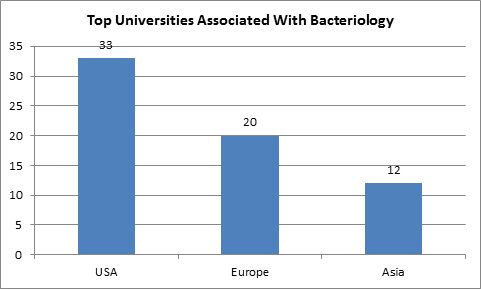
Figure 1: Top Universities Associated With Bacteriology
Source: Reference: 8
Top Universities in USA:
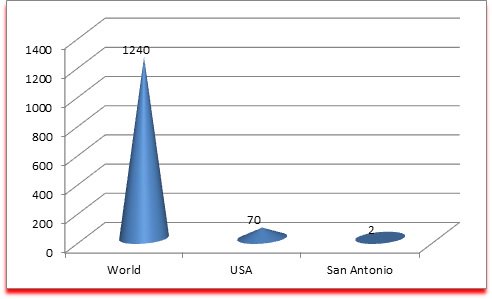
Figure 2: Top Universities in USA
Target Audience:
Industry 63%
Academia 30%
Others 7%

Figure 3: Target Audience
Source: Reference 3
Companies Associated with Bacteriology

Figure 4: Companies Associated with Bacteriology
Source: Reference 4
Statistical Analysis of Associations:
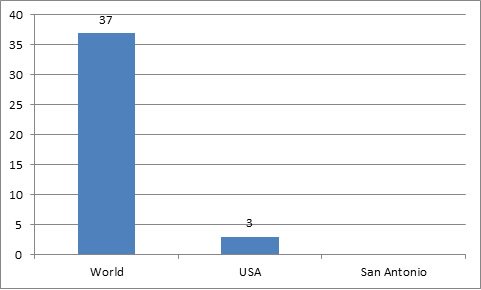
Figure 5: Statistical Analysis of Associations
Source: Reference 6
Percentage of Revenue Contribution for Research on Bacteriology:

Figure 6: Percentage of Revenue Contribution for Research on Bacteriology
Top global pharmaceutical companies manufacturing antimicrobial products:
1) Pfizer
2) Merck and Co
3) Johnson and Johnson
4) GlaxoSmithKline
5) Bristol-Meyers Squibb
6) Aventis
7) Pharmacia
8) Novartis
9) F. Hoffmann-La Roche
10) Astra Zeneca
11) Abott Laboratories
12) Wyeth
13) Eli Lilly and Co
14) Schering Plough
15) Bayer
Source: Reference 6
Funding sources and prevention of microbial diseases in USA for Bacteriology and Infectious Disease research:
Many U.S agencies are working to improve the health of world’s population. Under the Global Health Initiative (GHI), there is a concerted effort to improve coordination across U.S. agencies to increase efficiencies and align investments with recipient country priorities, with the aim of making programs sustainable. Some of the major funding agencies include:
1) Centres for disease control and prevention
2) NIH
3) The global fund to fight AIDS, TB and Malaria.
4) UNAIDS
5) ASM
6) AAAS
7) ASTMH
8) IDSA etc.
Source: Reference 8
References:
- http://www.scholarly-societies.org/microbiol_soc.html
- http://europe.graduateshotline.com/de.html#.VDzvI_mSy5A
- http://microbes.org/microbes-importance/industrial-application-of-microbes
- http://www.effost.org/events/xiii-workshop-rapid-methods-automation-food-microbiology/
- http://www.marketwatch.com/story/2-billion-industrial-microbiology-tests-conducted-for-product-quality-and-safety-worldwide-2014-08-28
- http://annualmeeting.conferenceseries.com/microbiologists/#sthash.hIoMn9Ga.dpuf
- http://www.usnews.com/education/best-global-universities/search?region=asia&subject=microbiology&name=#sthash.hIoMn9Ga.dpuf
- http://www.fda.gov/AdvisoryCommittees/CommitteesMeetingMaterials/Drugs/Anti-InfectiveDrugsAdvisoryCommittee/
Issue with VISA!!
Are you planning to have a professional and delightful trip to New York, USA???
We believe you must be having a query regarding your Visa to Visit as a Speaker/Delegate, Tourist or Business Person at New York, USA. Bacteriology Committee will be happy to help you in all regards to plan your trip to New York; USA Here is the simplest way to know the process for your Visa Approval. Kindly drops us an email at: bacteriology@conferenceseries.net .Avail the official invitation letter from us to attend this event ahead with a closer step for approval of your VISA. Processing time for visa applications vary depending on the office and the time of the year. Delegates/Attendees are encouraged to submit their visa applications well in advance of the date of the event at a Visa Application Centre or on-line E-applications, including all supporting documents.
Best Tourist Destination:
- Statue of Liberty
- Central Park
- Rockefeller Center and Top of the Rock Observation Deck
- Metropolitan Museum of Art
- Rockefeller Center and Top of the Rock Observation Deck
- Empire State Building
- 9/11 Memorial and Museum
- High Line
- Times Square
- Brooklyn Bridge & many more...
Bacteriology is the conventional branch of Microbiology, which focuses on basic microbiology, host-pathogen interactions, biochemistry, molecular biology and mechanisms, ecology and epidemiology of bacteria.
Bacteriology includes a wide range of topics in this field which includes Bacterial Ecology, Parasitic Infection, Pathogenic Bacteria, Bacterial toxin, Bacterial genomics, Bacteraemia, Salmonella, Bacterial Diseases, Intestinal parasites, Parasitic Worms, Anthrax, Clostridial infections, Leprosy, Listeriosis, etc. The Journal Bacteriology and Parasitology updates the microbiologists, pathologists, clinicians and veterinary specialists.
Bacteriology and Parasitology journal creates a platform for the authors to make their contribution towards the journal and the editorial office promises a peer review process for the submitted manuscripts for the quality of publishing. The Journal of Bacteriology and Parasitology is the prime priority among the research communities for updated path breaking discoveries in Bacteriology and Parasitology.
Speakers and other participants of Bacteriology & Infectious Diseases Conference get an offer of 30% waiver on publication fee. Do not miss the opportunity of publishing your research at right place and make sure your research reaches the right industry through OPEN ACCESS Journals.
Bacteriology and Infectious Diseases Journals Impact factor list :
|
Journal Name |
Journal Impact Factor* |
Citations Report |
|---|---|---|
|
0.71 3.01 (5 Yr Journal Impact Factor) |
||
|
1.55 2.71 (5 Yr Journal Impact Factor) |
||
|
0.804 1.746 (5 Yr Journal Impact Factor) |
||
|
1.83 1.43 (5 Yr Journal Impact Factor) |
||
|
0.72 1.37 (5 Yr Journal Impact Factor) |
||
|
0.49 1.14 (5 Yr Journal Impact Factor) |
||
|
0.88 0.9 (5 Yr Journal Impact Factor) |
||
|
0.77 0.86 (5 Yr Journal Impact Factor) |
||
|
1.65 |
||
|
1.65 |
||
|
3.15 4.09 (5 Yr Journal Impact Factor) |
||
|
1.55 2.71 (5 Yr Journal Impact Factor) |
||
|
1.62 2.13 (5 Yr Journal Impact Factor) |
||
|
1.83 1.43 (5 Yr Journal Impact Factor) |
||
|
0.72 1.37 (5 Yr Journal Impact Factor) |
||
|
0.49 1.14 (5 Yr Journal Impact Factor) |
||
|
0.88 0.9 (5 Yr Journal Impact Factor) |
||
|
0.15 0.89 (5 Yr Journal Impact Factor) |
||
|
0.93 0.29 (5 Yr Journal Impact Factor) |
||
|
1.65 |
||
|
1.65 |
||
|
0.68 |
||
|
0.5 |
||
|
0.214 |
||
|
0.111 |
Robert Koch: Fast Facts You Need to Know
Robert Koch, a German scientist who developed “many of the basic principles and techniques of modern bacteriology,” inspiring modern “microbe-hunters”
Perhaps better than anyone else at the time, Koch understood that sometimes the keys to solving big problems lay in their microcosms. He dedicated his life to studying germs – some of the tiniest of living organisms on Earth – and how they cause infectious diseases. Countless lives have been saved thanks to his role in proving the revolutionary idea that germs cause diseases, and in identifying the bacterium for anthrax, cholera, and tuberculosis.
Koch’s legacy doesn’t end there. By developing many of the basic principles and techniques of modern bacteriology, he inspired a new generation of scientists and “microbe-hunters,” ushering in a Golden Age of bacteriology. During this Golden Age, scientists discovered the microorganisms responsible for causing twenty-one different diseases. “As soon as the right method was found, discoveries came as easily as ripe apples from a tree,” Koch explained.
Antoni van Leeuwenhoek: Saw a whole world in a drop of water
Considered the first microbiologist, van Leeuwenhoek designed single-lens microscopes to unlock the mysteries of everything from bits of cheese to complex insect eyes. In a letter to the Royal Society of London, van Leeuwenhoek marveled at what he had seen in a sample of water from a nearby lake: "little animals" that we know now as bacteria and other microbes. Like Galileo, he ground and polished his own lenses. Some of his lenses attained a magnification of more than 200 times, allowing him to examine capillaries, muscle fibers, and other wonders of the microscopic universe.
Top 10 Worldwide mortality due to infectious diseases :
It's the delegate's responsibility to investigate the visa requirements for USA and to apply for a visa, if necessary. Individuals requiring an official Letter of Invitation from the conference organizers can request one by email by writing to us at bacteriology@infectiousconferences.com
To receive a Letter of Invitation, delegates, accompanying persons/children, student/post-doc/youth delegates and exhibitors must first register for the conference.The registration fee minus a handling fee of USD 100 will be refunded after the conference if the visa was applied for in time and proof is shown that a visa could not be granted even though all requested documents were submitted. Refund requests must be made in writing and sent to the Bacteriology 2018 via email.
All expenses incurred in relation to the conference are the sole responsibility of the delegate. The Letter of Invitation does not guarantee an entry visa to USA. However, the conference organizers will not directly contact embassies and consulates on behalf of delegates.
The deadline for requesting a Letter of Invitation is two month before travelling to USA.
Benefits for Delegates :
- Meeting experts of their choice
- Participation certification
- Opportunity of obtaining special waiver if they are attending the conference in group from same organization
- Networking and B2B meetings with the academic people attending the conference
For Delegates registration kindly visit: https://bacteriology.conferenceseries.com/registration.php

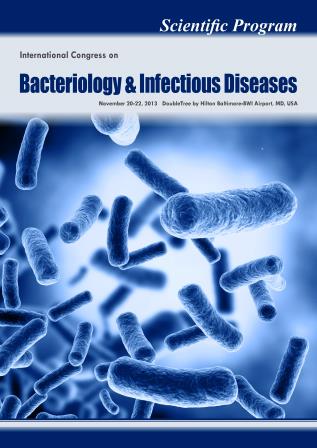


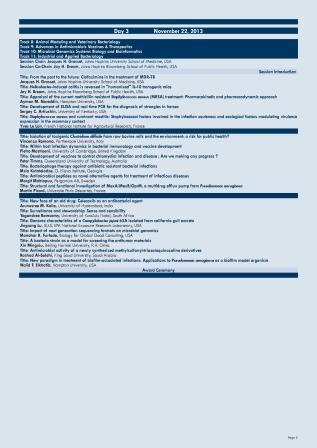
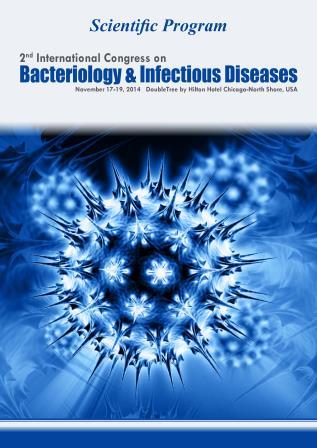
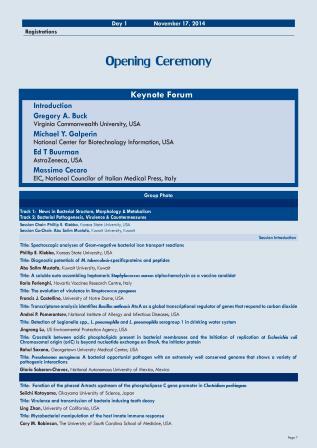
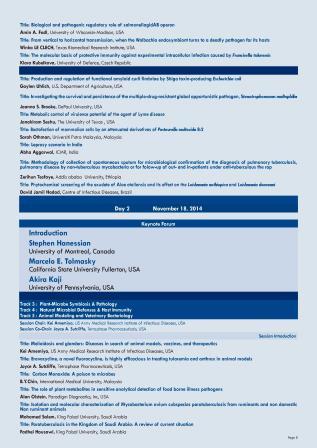
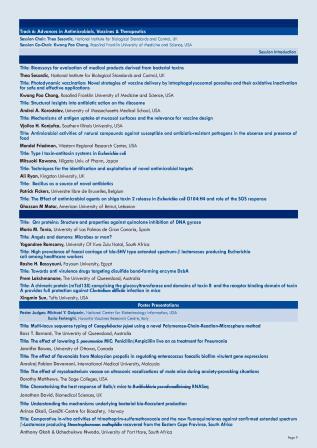

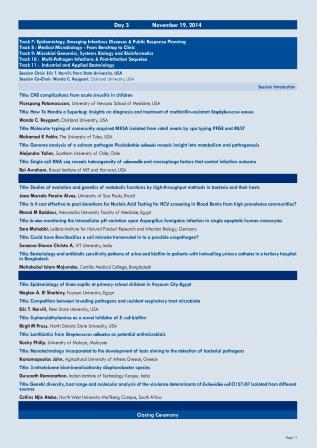
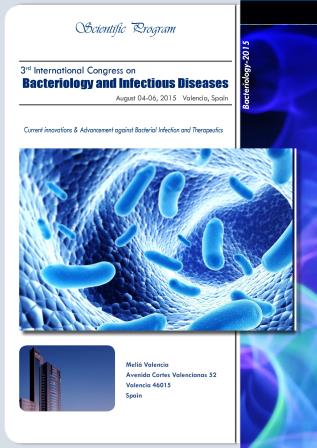
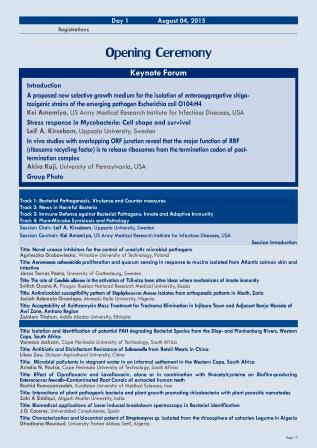

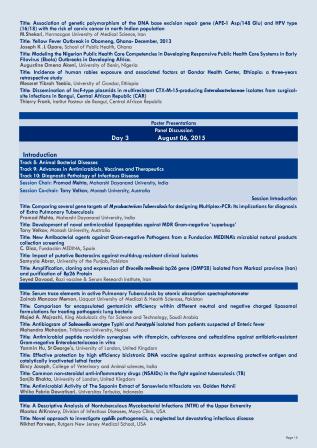

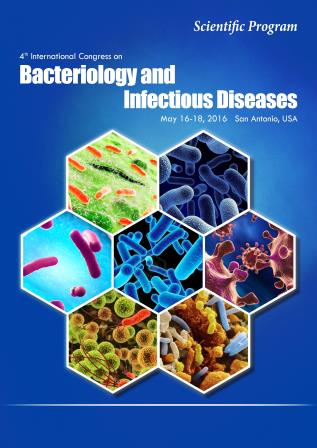




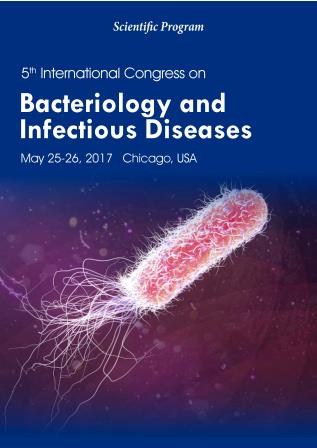

Conference Highlights
- Bacteriophage
- Bacterial Oral/ Mouth Infections
- Bacterial food infections
- Emerging Infectious Diseases
- Bacterial Pathogenesis
- Natural Microbial Defences & Immunity
- Multi Pathogen Infections
- Microbial genomics
- Industrial and Applied Bacteriology
- Surgical site infections (SSIs)
- Advances in Antimicrobial Vaccines
- Market Analysis and Manufactures
- Entrepreneurs Investment Meet
- Bacterial pulmonary infections (Pneumonia)
- Bacterial gastroenteritis
- Bacteria and pollution control
To share your views and research, please click here to register for the Conference.
To Collaborate Scientific Professionals around the World
| Conference Date | May 21-22, 2018 | ||
| Sponsors & Exhibitors |
|
||
| Speaker Opportunity Closed | |||
| Poster Opportunity Closed | Click Here to View | ||
Useful Links
Special Issues
All accepted abstracts will be published in respective Our International Journals.
- Journal of Bacteriology and Parasitology
- Mycobacterial Diseases
- Journal of Infectious Diseases and Therapy
Abstracts will be provided with Digital Object Identifier by








































































